►CAR’s pick of the best small hybrid cars
► Urban-friendly low-emission cars that can roam anywhere
► Superminis, hatchbacks and small SUVs
The best hybrid cars can represent a valuable stepping stone between conventional petrol and diesel models and full electric vehicles. Where full EVs often require a lifestyle change and often don’t work for those who can’t charge at home, the best hybrid cars are capable of slotting effortlessly into the gap left by a regular car.
There’s not much crossover between the best hybrid cars and the best small cars, though. With a few exceptions, manufacturers have concentrated their best hybrid technology on larger cars with bigger product margins, such as hybrid SUVs. Combined with the general decline of small cars, that leaves buyers looking for a small hybrid car with steadily fewer choices.
The best small hybrid car at a glance
- The cheapest: Honda Jazz
- The roomiest: Ford Puma
- The most fun: Suzuki Swift Sport
We’ve rounded up some of our favourites here. There’s a mixture of self-charging hybrid, plug-in hybrid and mild hybrid cars. If you’re looking for thrills, though, you probably won’t find many in this list – these are pragmatic cars, they’re good to drive, but with a couple of exceptions dynamic they ain’t.
The best small hybrid cars 2025
Toyota Yaris
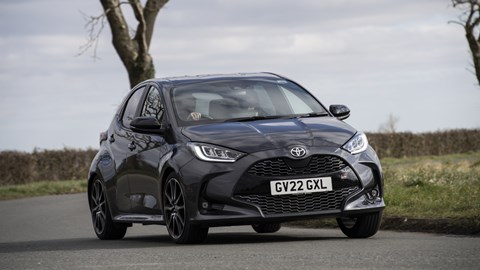
Best for economy
Pros: Economy, reliability, durability
Cons: Tiny back seats
The Yaris Hybrid has an unwelcome association with the blue-rinse brigade (though not as badly as the Honda Jazz, below) but that’s not really deserved with this latest generation. This good-looking supermini uses a 1.5-litre three-cylinder petrol engine that sounds much more refined at high rpm than its predecessor’s four-pot, making for a far nicer experience on the motorway.
Genuinely achievable fuel economy of more than 60mpg makes the Yaris incredibly cheap to run, while the solidly-built interior houses most of the kit you’d expect to find albeit in slightly grey, dull surroundings.
Read our full Toyota Yaris review
Honda Jazz
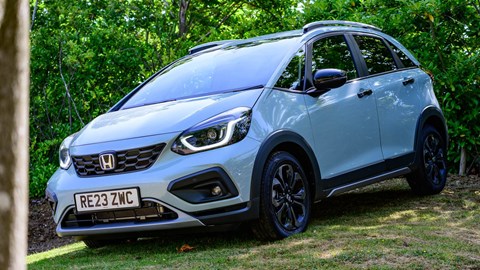
Best for practicality on a small scale
Pros: Efficient engine and packaging
Cons: Small boot, dull to drive
The Jazz’s clever hybrid system solely uses the electric motors to drive the car at low speeds while the engine cuts in at higher speed for more efficient motorway cruising. The result is smooth, returns 50mpg with ease and suits the Jazz perfectly.
The Jazz is also cracking value – it’s the cheapest full hybrid car on sale right now, and yet has more space for passengers than many cars from the class above. The flexible seats have loads of room for four six-foot adults, though without folding them the boot is a little pokey.
Read our full Honda Jazz review
Renault Clio
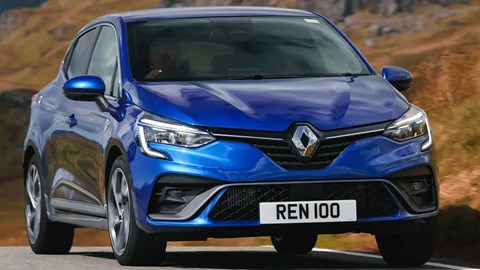
Best for a posh interior
Pros: Very efficient, upmarket interior
Cons: Small rear seats, a bit clunky
Renault’s hybrid powertrain uses the brand’s F1 know-how and a fiendishly complicated arrangement of dog clutches and electric motors. The result is as efficient as any of its supermini rivals, if a little less refined – it’s a bit clunky at low speeds. Powerful, though, giving the Clio good performance for its size.
The Clio’s interior is really posh for a small car, and the portrait infotainment screen of top-spec models is high-res and great to use. The boot’s also massive, though you pay for it with the slightly pokey rear seats. A newly facelifted model is on the way, with visual and tech improvements.
Read our full Renault Clio review
Suzuki Ignis
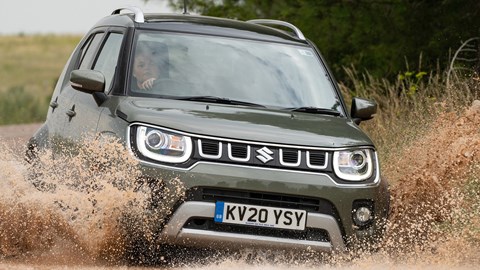
Best for mild off-roading
Pros: Genuinely small, fun to fling around
Cons: Budget interior
The Suzuki Ignis is a bit of an enigma. It’s the size of a city car but with a real SUV stance – and to back it up it’s even available with Suzuki’s AllGrip 4×4 system, which in one fell swoop makes it significantly more capable than the vast majority of much larger crossovers.
The Ignis’ mild hybrid 1.2-litre engine isn’t exactly a firecracker, though it makes up for that with over 60mpg achievable on a gentle cruise. And the tall body means it’s surprisingly spacious.
Peugeot 308
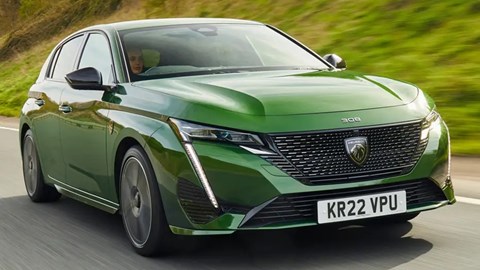
Best for Gallic style
Pros: Supermodel looks, posh interior, comfortable
Cons: Tiny steering wheel won’t suit all
The 308 is the second-poshest Stellantis mid-sized hatchback. It’s more upmarket than the Vauxhall Astra or Citroen C4, but less so than the DS 4. It feels most premium on the inside, where a well-built interior features luxury materials and high-resolution displays – including a row of customisable ‘iToggles’ – stupid name, clever execution.
The Peugeot’s driving position can be tough if you’re not the correct shape, and its plug-in hybrid powertrain is far from leading the pack in terms of efficiency or refinement. It’s smooth enough, though, and provides plenty of performance.
Read our full Peugeot 308 review
Toyota Yaris Cross
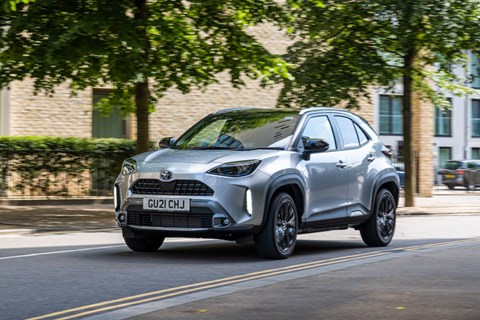
Best for efficiency on a larger scale
Pros: Great fuel economy, big boot
Cons: Dour exterior, dour-er interior
The Yaris Cross is what happens when you take a Yaris and pump it up with a few mild steroids. It retains its smaller sibling’s 1.5-litre hybrid powertrain and is almost as efficient, capable of well over 50mpg if driven carefully.
Interior space is excellent with good rear seats and a deep boot. What the Yaris Cross lacks is excitement, but when it’s so sensible we can’t really hold that against it.
Read our full Toyota Yaris Cross review
Suzuki Swift Sport
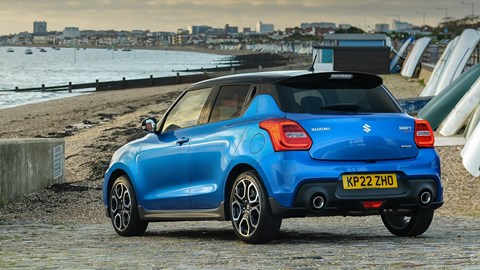
Best for those who absolutely must have a hybrid hot hatch
Pros: Lightweight and fun to drive
Cons: Feels insubstantial, not that quick
Finally, the first car on this list that’s a bit of fun to chuck through the corners. The Swift Sport may promise lots with its name but it’s categorically not a hot hatchback – it only has 128bhp. What it does do well is provide a sense of fun you don’t get with many other small hybrids.
The Swift’s mild-hybrid powertrain doesn’t add much bulk to this featherweight car, so it’s great fun to chuck through the bends. It’s also efficient and offers decent space for what’s actually a very small car.
Read our full Suzuki Swift Sport review
Kia Niro
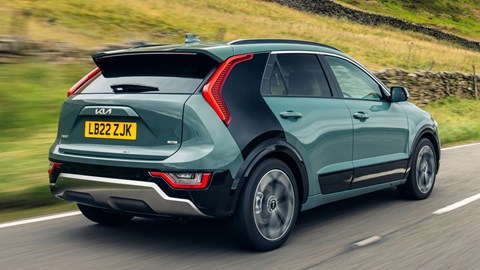
Best for choice
Pros: Self-charging or plug-in available
Cons: No fun, not that small
Okay, the Niro really is stretching the definition of ‘small’ here, but it’s reasonably compact by the standards of hybrid SUVs. You can also have your Niro with a self-charging or a plug-in hybrid powertrain, which both offer their own benefits.
It’s not exactly fun to drive but the interior’s cracking – beautifully made and spacious to boot, with the most idiot-proof infotainment system around.
Read our full Kia Niro review
Ford Puma
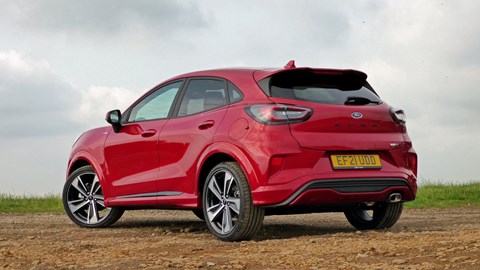
Best for a big boot
Pros: Huge boot with clever Megabox
Cons: Cheap dashboard
The Puma is fantastic to drive – its mild hybrid engines are powerful and willing, its handling is almost as good as the (now deceased) Fiesta supermini and its ride is perfectly judged.
It’s also surprisingly practical with good rear seat space and a huge boot, including the underfloor ‘MEGABOX’ storage compartment. Shame the interior’s a bit cheap to sit in.
Read our full Ford Puma review
Toyota Corolla
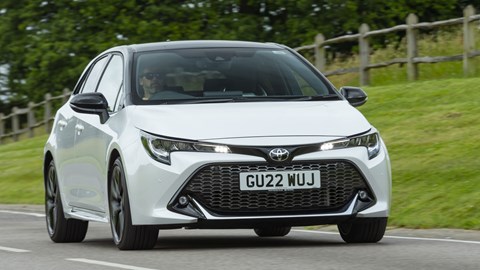
Best for outliving you
Pros: Ten-year warranty, surprisingly good to drive
Cons: Dark interior, cramped rear seats
Toyota knows hybrids better than anybody and the Corolla is one of its best. Recently updated with more power for improved drivability, it’s now smooth, powerful, and very efficient – almost as good to drive as the Honda Civic.
Updated infotainment lifts the interior, though it’s still cramped in the rear seats and rather unrelentingly dark and monochrome.
Read our full Toyota Corolla review
The different types of hybrid
Hybrid is the 21st-centry buzzword that started out meaning one thing, and now encompasses a whole load of range-extending to emission-reducing solutions. Series hybrids, like the original Prius, deliver lower emissions by being able to run the engine as a generator at optimal load; only the shortest electric-only drives are possible.
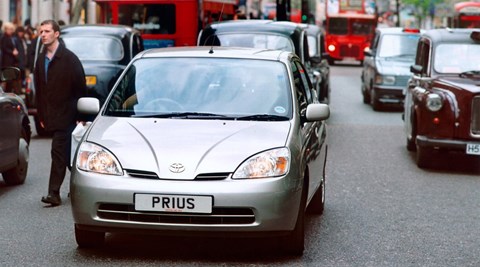
Mild hybrid cars achieve a similar goal by using small, lightweight extras batteries to trim off the most inefficient stages of driving, but they can’t move on electric power alone – look for 48V or MHEV in the name or specs to spot these.
Plug-in hybrid systems use larger batteries to greater effect, and are able to make short trips without producing local emissions. They usually operate as a series hybrid as well, reducing emissions and fuel consumption in more situations and topping up the battery with power that would otherwise be wasted.
However, the large batteries needed add weight and reduce space, so they’re not ideal for the smallest cars, and they’re often less economical than a diesel for high-mileage use.
View Leasing Offers
Is a small hybrid car a good buy in 2025?
For many drivers, it’s a great option – particularly a plug-in model, if you’ve access to a socket for recharging. Reduced commuting, uncertainty around schools and offices, an overall improvement in air quality and the desire to avoid petrol stations and other places of cross contamination all support running a good hybrid, as any change in circumstances that means longer distances or more frequent driving won’t cause the same stresses that running a pure electric car might involve.
Reliability and longevity are also improved as many hybrid cars spend little time using their fossil-fuel engine, too, and can usually use regenerative braking in town to save wear on pads and discs as well. No solution is perfect, but small hybrid cars really can offer the best of both worlds for zero-emission town drives and freedom to escape the urban jungle.